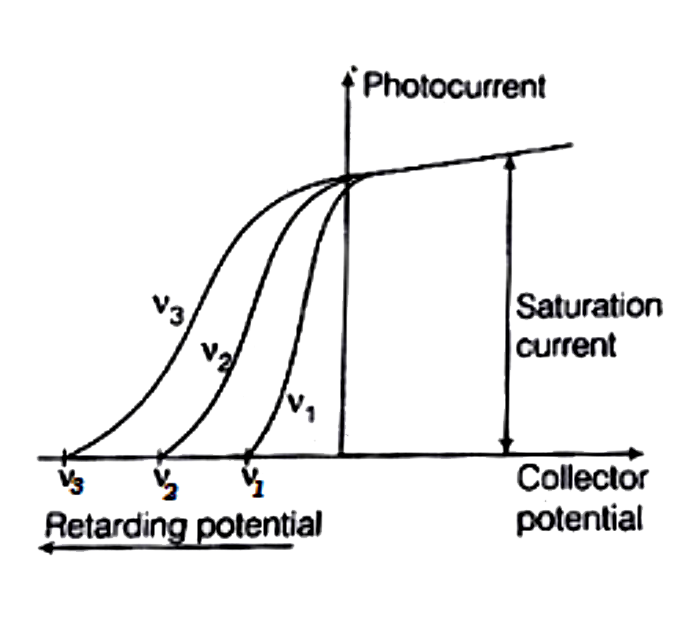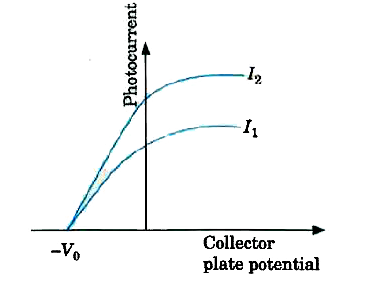Complete Solutions to COMPETITION FILE (OBJECTIVE TYPE QUESTIONS ( B - Multiple Choice Questions) (JEE (Main) & Other State Boards for Engineering entrance)) of chapter DUAL NATURE OF RADIATION AND MATTER of Class 12 book with complete answers and questions
| Class 12 | PHYSICS |
| Chapter | DUAL NATURE OF RADIATION AND MATTER |
| MODERN PUBLICATION | COMPETITION FILE (OBJECTIVE TYPE QUESTIONS ( B - Multiple Choice Questions) (JEE (Main) & Other State Boards for Engineering entrance)) |
| Number Of Questions | 18 |
| Academic Year | 2023-24 |
Two electrons are moving with non-relativistic speeds perpendicular to each other. If corresponding de Broglie wavelengths are `lambda_(1)` and `lambda_(2)` their the Brogile wavelength in the frame of reference attached to their centre of mass is :
View Solutionv20
View SolutionBoth the nucleus and the atom of some element are in their respective first excited states. They get de-excited by emitting photons of wavelengths `lambda_(N) ,lambda_(A)` respectively. The ratio `(lambda_(N))/(lambda_(A))` is closest to :
View SolutionA nucleus A, With a finite de-broglie wavelength `lambda_(A)`, undergoes spontaneous fission into two nuclei B and C of equal mass. B flies in the same direction as that of A, While C flies in the opposite direction with a velocity equal to half of that of B . The de-Broglie wavelength `lambda_(B)` and `lambda_(B)` and C are respectively:
View SolutionThe anode voltage of photocellis kept fixed. The wavelength `lambda` of the light falling on the cathode is gradually changed. The plate current `I` of the photocell varies as follows:
View SolutionThe radiation corresponding to ` 3 rarr 2` transition of hydrogen atom falls on a metal surface to produce photoelectrons . These electrons are made to enter circuit a magnetic field `3 xx 10^(-4) T` if the ratio of the largest circular path follow by these electron is `10.0 mm , the work function of the metal is close to
View SolutionIn a photoelectric experiment, with light of wavelength `lambda`, the fastest election has speed v. If the exciting wavelength is changed to `(3lambda)/4`, the speed of the fastest emitted electron will become
View SolutionWhen photon of wavelength `lambda_(1)` are incident on an isolated shere supended by an insulated , the corresponding stopping potential is found to be `V`. When photon of wavelength `lambda_(2)` are used , the orresponding stopping potential was thrice the above value. If light of wavelength `lambda_(3)` is used , carculate the stopping potential for this case.
View SolutionA photoelectric surface is illuminated successively by monochromatic light of wavelength `lambda` and `(lambda)/(2)`. If the maximum kinetic energy of the emitted photoelectrons in the second case is `3` times than in the first case , the work function of the surface of the material is
(`h` = Plank's constant , `c` = speed of light )
View SolutionDe - Broglie wavelength of an electron accelerated by a voltage of 50 V is close to
`(|e|=1.6xx10^(-19)C,m_(e)=9.1xx10^(-31))`
View SolutionA photon of wavelength `lamda` is scatted from an electron , which was at rest. The wavelength shift `Deltalamda` is three times of `lamda` and the angle of scattering `theta` is `60^@` . The angle at which the electron recoiled is `phi` . The value of tan `phi` is (electron speed is much smaller than the speed of light )
View SolutionA beam of light has two wavelengths `4,972Å and 6,216Å ` with a total intensity of `3.6xx10^(-3) W m^(-2)` equally distributed among the two wavelengths . The beam falls normally on an area of `1 cm^2` of clean metallic surface of work function 2.3 eV . Assume that there is no loss of light by reflection and that each capable photon ejects one electron. The number of photoelectrons liberated in 2 s is approximately
View SolutionThe variation of photocurrent with collector potential for different frequencies of incident radiation `v_1,v_2,v_3` is as shown in the the graph , then

View SolutionThe electric field of light wave is given as `vec(E)=10^(-3)cos((2 pi x)/(5xx10^(-7))-2pi xx 6xx10^(14)t) hat(x) (N)/(C)`. This light falls on a metal plate of work function 2 eV. The stopping potential of the photo-electrons is:
Given, E (in eV) `= (12375)/(lambda ( "in" Å ))`
View SolutionThe maximum velocity of the photoelectrons emitted from the surface is v when light of frequency n falls on a metal surface. If the incident frequency is increased to 3n, the maximum velocity of the ejected photoelectrons will be
View SolutionA laser light of wavelength 660 nm is used to weld Retina detachment. If a laser pulse of width 60 ms and power 0.5 kW is used, the approximate number of photons in the pulse are (Take Planck's Constant, `h=6.62xx10^(-34)Js`)
View SolutionA particle A of mass m and initial velocity v collides with a particle of B of mass `m/2`which is at rest. The collision is head-on and elastic. The ratio of the de Broglie wavelengths `lamda_(A) "to" lamda_(B)` after collision is
View SolutionFrom the following graph of photocurrent against collector plate potential, for two different intensities of light `I_1 and I_2` one can conclude.

View Solution
COMPETITION FILE (OBJECTIVE TYPE QUESTIONS ( B - Multiple Choice Questions) (JEE (Main) & Other State Boards for Engineering entrance)) questions and complete solutions for chapter DUAL NATURE OF RADIATION AND MATTER of MODERN PUBLISHERS PHYSICS (HINGLISH) of Class 12
All Exercises from MODERN PUBLICATION Class 12 PHYSICS DUAL NATURE OF RADIATION AND MATTER
- CHAPTER PRACTICE TEST
- COMPETITION FILE (OBJECTIVE TYPE QUESTIONS ( A - Multiple Choice Questions))
- COMPETITION FILE (OBJECTIVE TYPE QUESTIONS ( B - Multiple Choice Questions) (AIPMT/NEET & Other State Boards for Medical Entrance))
- COMPETITION FILE (OBJECTIVE TYPE QUESTIONS ( B - Multiple Choice Questions) (JEE (Advanced) for IIT Entrance))
- COMPETITION FILE (OBJECTIVE TYPE QUESTIONS ( B - Multiple Choice Questions) (JEE (Main) & Other State Boards for Engineering entrance))
- COMPETITION FILE (OBJECTIVE TYPE QUESTIONS ( C - Multiple Choice Questions) )
- COMPETITION FILE (OBJECTIVE TYPE QUESTIONS ( D - Multiple Choice Questions) )
- COMPETITION FILE (OBJECTIVE TYPE QUESTIONS (ASSERTION REASON TYPE QUESTIONS))
- COMPETITION FILE (OBJECTIVE TYPE QUESTIONS (INTEGER TYPE QUESTIONS))
- COMPETITION FILE (OBJECTIVE TYPE QUESTIONS (MATCHING TYPE QUESTIONS))
- COMPETITION FILE (OBJECTIVE TYPE QUESTIONS (MATRIX MATCH TYPE QUESTIONS))
- Conceptual Questions
- Higher Order Thinking Skills & Advanced Level (QUESTIONS WITH ANSWERS)
- NCERT FILE (NCERT - Additional Exercises)
- NCERT FILE (Textbook Exercises)
- NCERT FILE (NCERT - Exemplar Problems - Objective Questions (Multiple Choice Questions (Type - I)))
- NCERT FILE (NCERT - Exemplar Problems - Objective Questions (Multiple Choice Questions (Type - II)))
- NCERT FILE (NCERT - Exemplar Problems - Subjective Questions (Short Answer Type Questions))
- NCERT FILE (NCERT - Exemplar Problems - Subjective Questions (Very Short Answer Type Questions))
- PRACTICE PROBLEMS - 1
- PRACTICE PROBLEMS - 2
- PRACTICE PROBLEMS - 3
- Revision Exercises (Additional Questions)
- Revision Exercises (Fill in the Blanks)
- Revision Exercises (Long Answer Questions)
- Revision Exercises (Numerical Problems)
- Revision Exercises (Short Answer Questions)
- Revision Exercises (Very Short Answer Questions)
- SOLVED EXAMPLES
- Tough & Tricky PROBLEMS